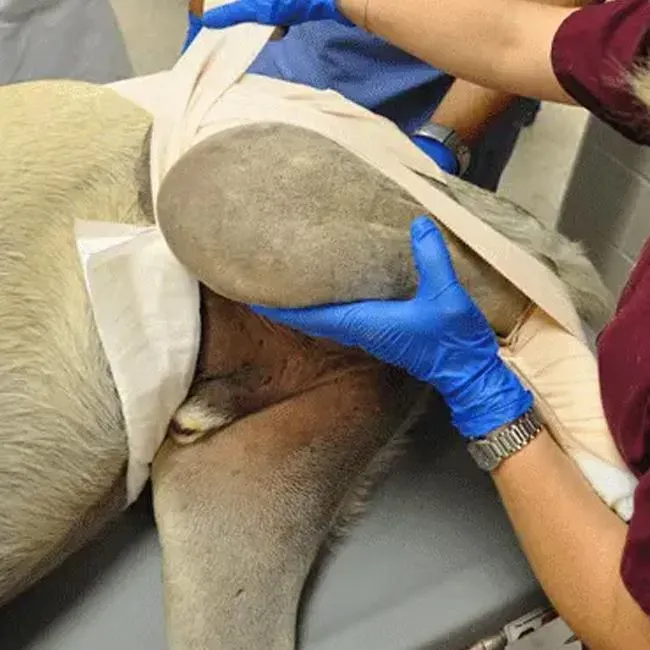Pet Coxofemoral Hip Luxation Care in Stockton, CA
Coxofemoral (Hip) Luxation in Dogs: A Comprehensive Guide
Coxofemoral luxation, or hip dysplasia, is a common orthopedic condition in dogs, particularly large and giant breeds. It occurs when the ball-and-socket joint of the hip becomes unstable, leading to the dislocation or partial dislocation of the femoral head from the acetabulum.
Symptoms of Hip Dysplasia
Limping: A noticeable limp, especially in the hind legs.
Pain: Dogs may show signs of pain, such as whining or reluctance to move.
Muscle Atrophy: The muscles in the affected leg may appear smaller and weaker.
Difficulty Rising or Jumping: Dogs may struggle to get up from a lying position or jump onto furniture.
Bunny Hopping: A distinctive gait where the dog hops on its hind legs instead of walking normally.
Causes of Hip Dysplasia
The exact cause of hip dysplasia is complex and not fully understood. However, several factors can contribute to its development:
Genetics: Certain breeds are more predisposed to hip dysplasia, such as German Shepherds, Labrador Retrievers, and Rottweilers.
Rapid Growth: Rapid growth can put stress on the developing hip joint.
Nutrition: Improper nutrition, especially excessive protein intake, can contribute to bone and joint problems.
Trauma: Injuries to the hip joint can increase the risk of dysplasia.
Diagnosis and Treatment
Diagnosis of hip dysplasia typically involves a physical examination, X-rays, and sometimes advanced imaging techniques like CT scans or MRI.
Treatment options vary depending on the severity of the condition and the dog's age and overall health. Some common treatments include:
Medications: Pain relievers and anti-inflammatory drugs can help manage pain and inflammation.
Weight Management: Maintaining a healthy weight can reduce stress on the joints.
Physical Therapy: Physical therapy can help strengthen muscles and improve mobility.
Surgery: In severe cases, surgery may be necessary to repair the hip joint.
Managing Hip Dysplasia
Controlled Exercise: Regular, moderate exercise can help strengthen muscles and improve joint function.
Pain Management: Medications can help alleviate pain and inflammation.
Surgery: In severe cases, surgery may be necessary to repair the hip joint.
If you notice any signs of hip dysplasia in your dog, it's important to consult with a veterinarian for proper diagnosis and treatment. Early intervention can often help manage the condition and improve your dog's quality of life.

Testimonial
What They Say

Was looking for a new Vet near me in Stockton and very happy with Walker Vet Hospital! Customer service, informative, and compassionate with staff and doctors. Give a 10 out of 10. Taking all three of my dogs there happily.


Rae W.

Good value and knowledgeable. No waiting most of the time. Always 2-3 doctors at a time and weekend care available which is appreciated. All of our three dogs been going to Walker Vet in Stockton for some time now. Never any complaints.


Nick G.

Review Us!
Visit our Google review page to share your feedback

Review Us!




